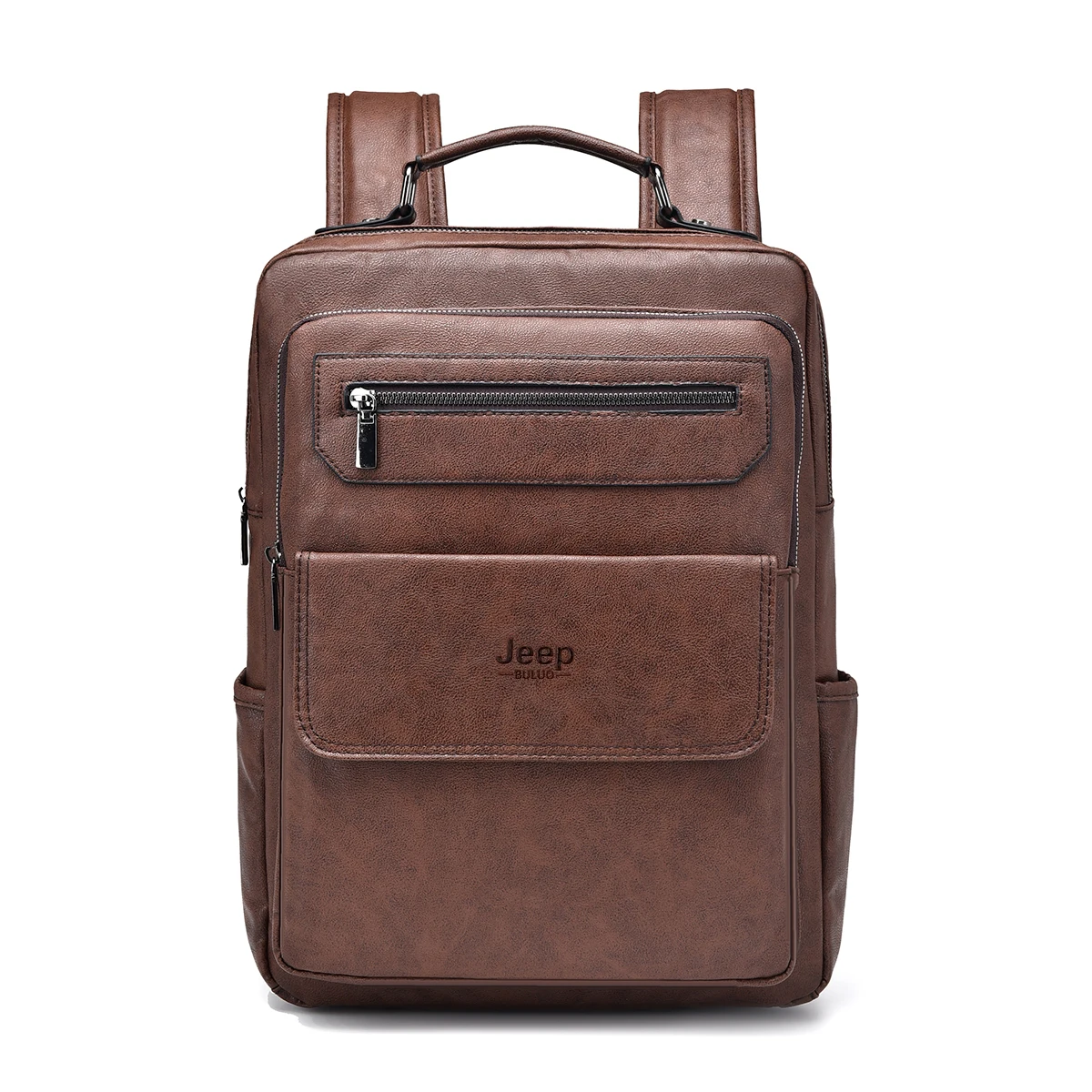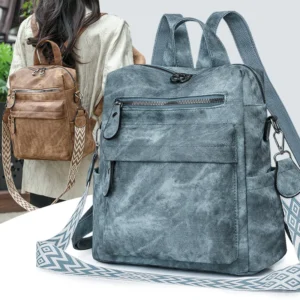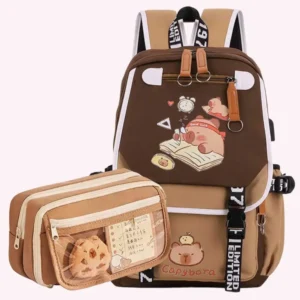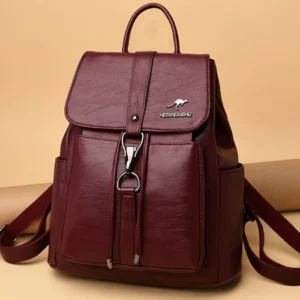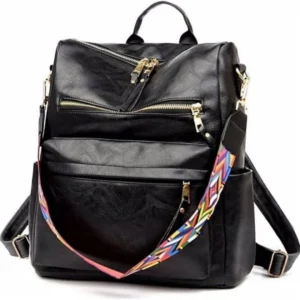Introduction to Leather Rucksack Designs
Leather rucksacks have maintained their appeal through decades of changing fashion trends, standing as a testament to the perfect marriage of functionality and timeless style. These versatile bags offer more than just a way to carry belongings—they make a statement about personal style while providing practical solutions for everyday needs.
Understanding the various design elements of leather rucksacks is crucial when making a selection that will serve you well for years to come. From closure mechanisms to strap designs, each feature plays a significant role in how the bag performs in different situations. The choosing leather rucksack buyers guide provides essential information for making informed decisions.
Different designs cater to distinct lifestyle needs:
– Some prioritize professional aesthetics for business environments
– Others emphasize durability for travel and outdoor adventures
– Many balance casual style with practical organization for everyday use
This comprehensive comparison explores the evolution of leather rucksack designs from their practical military and hiking origins to sophisticated urban accessories. We’ll examine traditional craftsmanship alongside innovative modern approaches, helping you identify what to look for in leather rucksack features that align with your specific requirements.
The leather rucksack has evolved from purely utilitarian beginnings to become an expression of personal style without sacrificing functionality—a rare quality in today’s accessory market.
Classic Leather Rucksack Design Styles
Flap-Over Designs
Flap-over leather rucksacks feature a distinctive top flap that folds over the main compartment, typically secured with buckles or straps. This classic design creates a structured, heritage-inspired aesthetic that resonates with those appreciating traditional craftsmanship. Understanding the nuances between leather backpack styles explained helps in recognizing quality features.
The closure mechanisms vary widely—from authentic metal buckles that provide security with vintage appeal to hidden magnetic snaps beneath decorative straps that offer quick access while maintaining the classic look. Front pockets often nestle beneath the protective flap, while the main compartment usually features a drawstring or zipper for added security.
These rucksacks come in multiple size variations, from compact city versions (15-18 liters) to larger travel models (25-30 liters). The flap-over design particularly suits everyday carry, professional environments, and light travel scenarios.
Pros:
– Secure closure system that naturally protects against theft
– Excellent weather protection as rain runs off the flap
– Timeless appearance that ages beautifully
Cons:
– Sometimes slower access requiring two-step opening
– Can be slightly heavier than minimalist designs
– Limited expandability for varying load sizes
Roll-Top Designs
Roll-top rucksacks feature a distinctive expandable top that rolls down and secures with buckles, hooks, or magnetic closures. This adaptable design creates a modern, urban aesthetic that appeals to those seeking contemporary style with practical flexibility. The roll-top leather backpack design has gained popularity for its versatility in urban environments.
These bags typically embrace a cleaner aesthetic with minimal external pockets, though many incorporate hidden side-access points for frequently needed items. The interior often features thoughtful organization systems including laptop sleeves, document dividers, and small item pockets.
The defining advantage of roll-top designs lies in their adjustable capacity—they can expand to accommodate larger loads or compress for a sleeker silhouette when carrying less. This makes them ideal for cyclists, commuters, and those with unpredictable carrying needs.
Pros:
– Superior weather resistance when properly rolled and secured
– Expandable capacity adapts to carrying needs
– Modern, streamlined appearance
Cons:
– Access requires unrolling and sometimes unbuckling
– Can look bulky or awkward when not reasonably full
– Organization sometimes sacrificed for flexible space
Drawstring/Cinch-Top Designs
Drawstring or cinch-top leather rucksacks feature an open top that closes by pulling a cord or strap that gathers the leather at the opening. This creates a relaxed, slightly casual aesthetic with a nod to historical rucksack designs. The style often incorporates a more supple leather construction that enhances the natural drape of the bag.
Many designers pair the drawstring closure with a secondary security feature—often a flap with a buckle or magnetic snap—to address the inherent security limitations. These bags typically offer simpler organization with fewer compartments, emphasizing a spacious main chamber.
The drawstring design excels in casual environments and light everyday use where quick access takes priority over maximum security or weather protection. The natural shape distributes weight comfortably across the back when properly designed.
Pros:
– Quick one-handed access to contents
– Excellent weight distribution when carried
– Relaxed, versatile style that suits casual settings
Cons:
– Less secure than buckled or zippered designs
– Limited organization options compared to structured designs
– Reduced weather protection at the top opening
Specialized Leather Rucksack Designs
Convertible Rucksacks
Convertible leather rucksacks bring versatility to a new level, transforming between backpack and alternative carrying styles to suit changing situations. These innovative designs typically feature hideaway straps that tuck into dedicated pockets or detachable components that allow complete transformation from rucksack to briefcase, tote, or messenger bag.
The convertible leather backpack design represents the pinnacle of adaptability for those navigating between casual and professional environments throughout their day. The conversion mechanisms range from simple strap adjustments to more complex systems with multiple attachment points and configuration options.
These bags particularly benefit business travelers who might carry their bag as a backpack during transit but prefer a more professional briefcase appearance during meetings. The design requires careful balance between versatility and potential compromises in specialized functionality.
Pros:
– Adaptability to different social and professional contexts
– Reduces need for owning multiple bags for different purposes
– Often includes thoughtful business-oriented organization
Cons:
– Additional hardware may add weight
– May not excel at either carrying style compared to purpose-built designs
– Sometimes more complex to reconfigure quickly
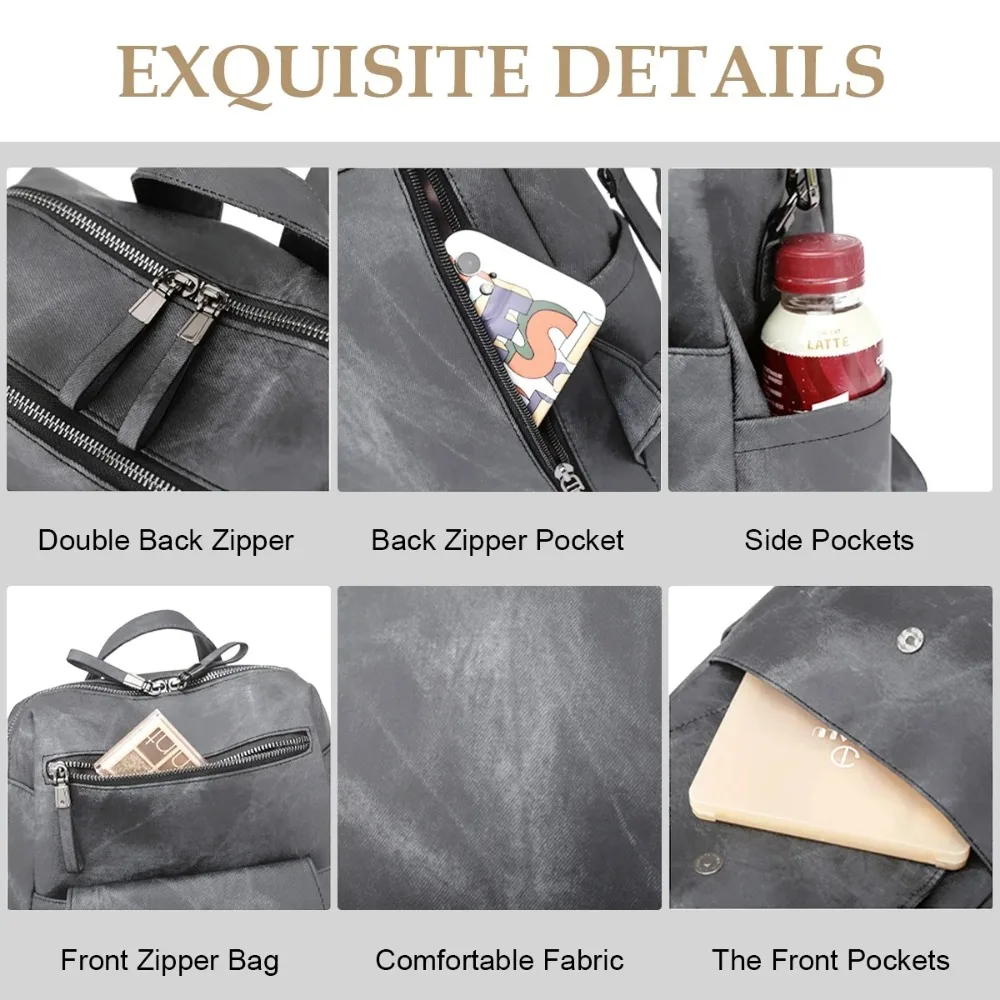
Travel & Expedition Rucksacks
Travel and expedition leather rucksacks emphasize enhanced capacity and durability for extended journeys. These robust designs feature larger dimensions (typically 28-40 liters), multiple compartments for organized packing, and reinforced construction to withstand the rigors of travel. The guide selecting travel rucksacks provides valuable insights for choosing appropriate models.
Organization becomes paramount in travel designs, with specialized compartments for documents, electronics, clothing, and accessories. Many incorporate security features like hidden pockets, RFID protection, and tamper-resistant closures. The ergonomics receive particular attention, with padded shoulder straps, sternum stabilizers, and sometimes waist belts for heavier loads.
Weather protection features prominently in these designs, with water-resistant treatments, protective flaps over zippers, and construction methods that minimize vulnerable seams. The leather selected for travel rucksacks typically emphasizes durability over suppleness.
Pros:
– Generous capacity for extended trips
– Enhanced comfort features for carrying heavier loads
– Superior durability and reinforcement at stress points
Cons:
– Heavier than everyday designs even when empty
– May be excessive for daily use in terms of size and features
– Higher investment given the specialized construction
Minimalist Daypacks
Minimalist leather daypacks strip down the rucksack concept to its essentials, focusing on clean lines, thoughtful access, and just enough organization for daily necessities. These designs embrace the “less is more” philosophy, often featuring a single main compartment with a simple laptop sleeve and perhaps 1-2 small pockets for essentials.
The small leather backpack approach emphasizes quality materials and construction over excessive features. Access typically comes via a streamlined top zip or simple flap, allowing quick retrieval of contents without navigating multiple compartments or closures.
These designs excel in professional and urban environments where a sleek appearance matters, carrying daily essentials without unnecessary bulk. The simplicity often results in lighter weight and a more versatile aesthetic that complements various styles.
Pros:
– Lightweight construction reduces carrying burden
– Versatile appearance suits multiple environments
– Focuses on quality of essential features rather than quantity
Cons:
– Limited capacity compared to larger designs
– Fewer organizational features for specific items
– May require more thoughtful packing of essentials
Critical Construction Features Across Designs
Closure Systems & Their Impact
The closure system fundamentally defines both the security and accessibility of a leather rucksack. The types of closures leather backpacks employ significantly impact everyday usability. Traditional buckles provide excellent security and vintage appeal but require more time to open and close. Quick-release buckles offer a compromise with the appearance of traditional hardware but faster operation.
Zippers provide convenient access but introduce potential failure points and water ingress concerns unless protected by flaps or water-resistant treatments. Magnetic closures offer the quickest access but may sacrifice some security and can sometimes lose strength over time.
Weather resistance varies dramatically across closure types—flap-overs with proper overlap provide natural protection, roll-tops excel when correctly secured, while exposed zippers remain most vulnerable unless specially treated or covered.
The hardware quality directly influences long-term functionality, with solid brass or stainless steel components offering the best durability and developing character over time. Quality closures should operate smoothly without catching while providing satisfying tactile feedback.
Strap & Harness Design
The comfort of carrying a leather rucksack depends largely on thoughtful strap and harness design. Width proves crucial—narrower straps may look sleeker but distribute weight poorly, while wider straps (typically 2-2.5 inches) prevent pressure points during extended wear.
Padding density and quality dramatically affect comfort with heavier loads. Premium designs use multilayer padding with firmer foam against the bag to prevent collapse and softer foam against the body for comfort. Strap attachment points require reinforcement to prevent tearing under stress—quality designs use rivets, bar tacking, or reinforced stitching at these critical junctions.
Adjustment mechanisms deserve close attention—metal hardware generally outperforms plastic for durability, though it adds weight. The placement and design of adjusters should prevent slipping under load while remaining easy to manipulate when needed.
Some premium designs incorporate subtle ergonomic shaping that follows the natural contours of shoulders and back, significantly enhancing comfort during extended wear.
Interior Organization Approaches
Interior organization philosophies range from minimalist open chambers to highly compartmentalized systems. The effectiveness depends largely on intended use—creative professionals might prefer adaptable open space, while business users typically benefit from dedicated places for specific items.
Laptop protection approaches vary widely—some designs incorporate padded sleeves suspended above the bag bottom to prevent impact damage, while others use separate compartments with reinforced panels. The most thoughtful designs ensure electronics remain protected while maintaining a balanced weight distribution.
The tension between fixed and flexible organization manifests in different approaches—some bags offer permanent dedicated pockets, while others incorporate removable organizers or modular systems. The most versatile designs create semi-structured spaces that suggest organization without mandating exactly what goes where.
Material choices inside matter as much as outside—microfiber or suede linings protect valuable items, while lighter-colored interiors significantly improve visibility of contents compared to dark linings that can turn the bag into a “black hole” for small items.
External Access & Pocket Configurations
External access features balance convenience against security and aesthetic considerations. Quick-access pockets on the exterior provide convenience for frequently needed items but introduce potential security vulnerabilities if not properly designed. The most thoughtful designs position these pockets against the wearer’s back or under protective flaps.
Water bottle storage represents a particular challenge for leather rucksacks—external pockets compromise the clean lines, while internal storage risks leakage. Some innovative designs incorporate expandable side pockets that remain flat when empty or hidden bottle sleeves that maintain the bag’s silhouette.
Security-conscious designs sometimes incorporate hidden pockets against the back panel for valuable items like passports or wallets. These provide peace of mind in crowded environments while maintaining the clean aesthetic of the bag.
The placement of external features significantly impacts the rucksack’s profile when worn—asymmetrical pocket arrangements may create unbalanced loads, while thoughtfully distributed storage helps maintain the bag’s intended silhouette even when fully packed.
Leather Types and Their Impact on Design & Performance
The choice of leather fundamentally shapes a rucksack’s appearance, performance, and longevity. Full-grain leather, the highest quality available, retains the natural grain pattern and imperfections of the hide’s outer layer. This dense, tight-fiber structure creates exceptional durability and develops a distinctive patina over time that tells the story of the bag’s use. The full-grain leather backpack represents an investment in lasting quality.
Top-grain leather, created by sanding away imperfections from the upper layer, offers a more uniform appearance and slightly less durability than full-grain. The thinner profile makes it ideal for designs requiring more flexibility or lighter weight. It typically takes finishes well, allowing for more consistent coloration.
Vegetable-tanned leather uses natural tannins from plant materials, creating a distinctive warm color that darkens beautifully with exposure to sunlight and handling. This traditional process produces leather that starts somewhat stiff but develops exceptional character and suppleness over time. Chrome-tanned alternatives offer softer initial feel and broader color options but typically develop less distinctive patina.
Crazy horse (pull-up) leather contains special waxes and oils that create a distressed appearance when the surface is scratched or folded, highlighting natural variations. This rustic leather suits vintage-inspired designs and casual styles, offering excellent durability with an instantly lived-in look.
Suede and nubuck (created by buffing the outer or inner side of the hide) offer velvety textures but require more protection from moisture and staining. Their soft appearance suits more casual rucksack designs but demands additional maintenance to preserve appearance.
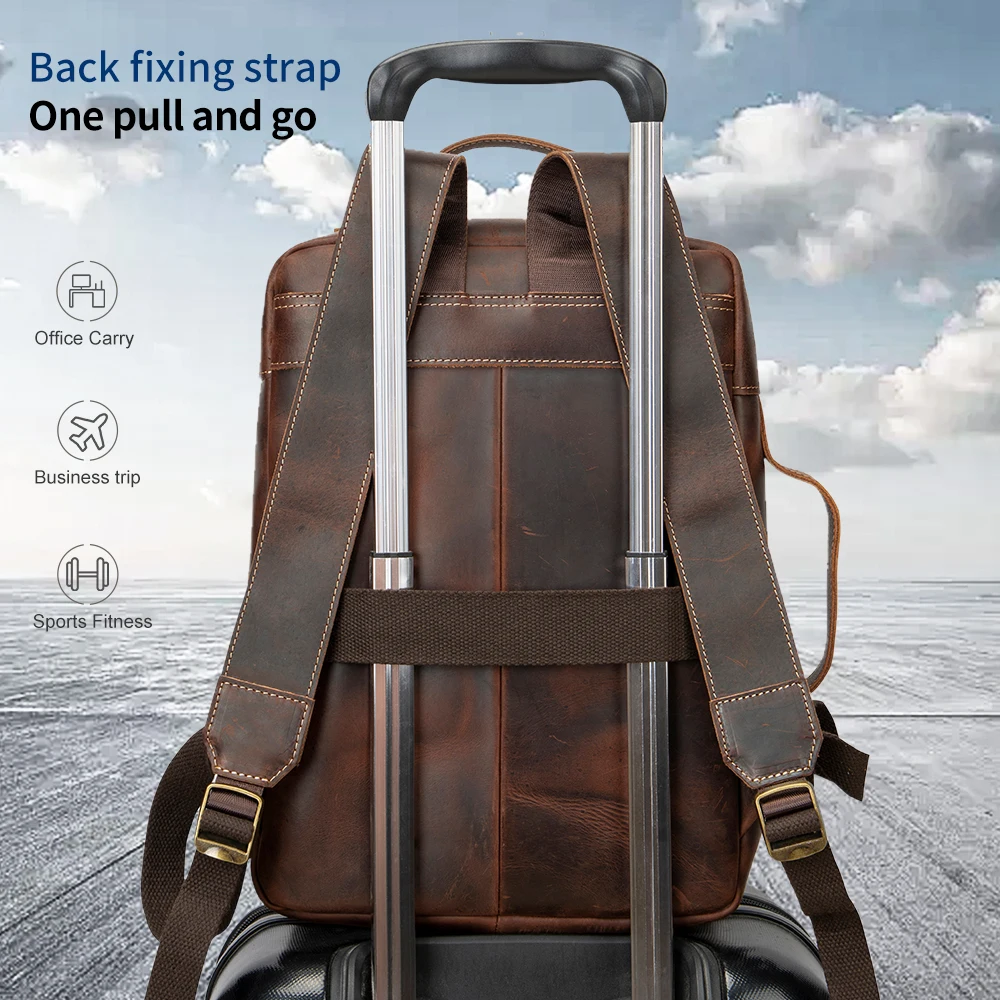
Hardware Quality Considerations
Hardware quality often distinguishes exceptional leather rucksacks from merely adequate ones, with these metal components frequently determining a bag’s long-term durability. Solid brass hardware offers a warm golden tone that develops an attractive patina over time, complementing the natural aging of quality leather. Its exceptional durability makes it worth the additional weight, particularly for critical stress-bearing components.
Stainless steel hardware provides modern silver tones with outstanding corrosion resistance, making it ideal for designs that may encounter moisture regularly. Its strength-to-weight ratio often surpasses brass, though it develops less distinctive character over time.
Zinc alloy components offer cost advantages with reasonable durability when properly manufactured but may become brittle or break under extreme stress. The finish can sometimes wear unevenly, particularly on high-contact areas like buckles.
The optimal leather thickness backpack design balances durability needs with appropriate hardware strength. Critical hardware components demand particular attention during evaluation:
Buckles and clasps should operate smoothly without catching while maintaining enough tension to prevent accidental opening. Quality designs often incorporate roller buckles that reduce strain on leather straps during adjustment.
Zipper quality varies dramatically—YKK and RiRi represent the gold standards, with smooth operation and excellent longevity. Metal zippers typically outlast plastic versions but add weight. Water-resistant designs with covered coils or sealed teeth offer additional protection for contents.
Rivets and reinforcements at stress points significantly extend bag lifespan. Double-cap rivets (finished on both sides) provide superior strength and appearance compared to single-cap versions that expose rough edges on the interior.
D-rings and attachment points should be securely mounted through multiple layers of leather or reinforced zones to distribute stress rather than concentrating it on a single layer.
Design Features That Impact Functionality
The practical functionality of a leather rucksack stems directly from thoughtful design decisions that balance competing priorities. The leather rucksack features use case relationship determines which aspects matter most for specific needs.
Access design creates an inherent trade-off between security and convenience. Top-loading designs typically offer greater security but require more steps to retrieve contents, while side-access panels provide quick retrieval of specific items without removing the bag. The most versatile designs incorporate both approaches, securing valuable items in the main chamber while keeping frequently needed accessories in quick-access zones.
Weight distribution significantly impacts carrying comfort, particularly with heavier loads. Designs that hold contents close to the back and distribute weight vertically rather than allowing it to hang low reduce strain during extended wear. Structured backs prevent uncomfortable pressure points from contents pressing through the leather.
Weather protection varies dramatically across designs. Flaps naturally channel water away from openings, while exposed zippers remain vulnerable unless covered or specially treated. Some premium designs incorporate discreet waxed canvas or water-resistant leather in key exposure areas without compromising the overall aesthetic.
Organization approaches balance efficiency against flexibility. Fixed compartments provide consistent places for specific items but limit adaptability, while open spaces offer maximum flexibility but may require additional organizers. The most thoughtful designs create intuitive zones that suggest organization without rigidly enforcing it, accommodating changing needs over the bag’s long lifespan.
Matching Rucksack Design to Your Lifestyle
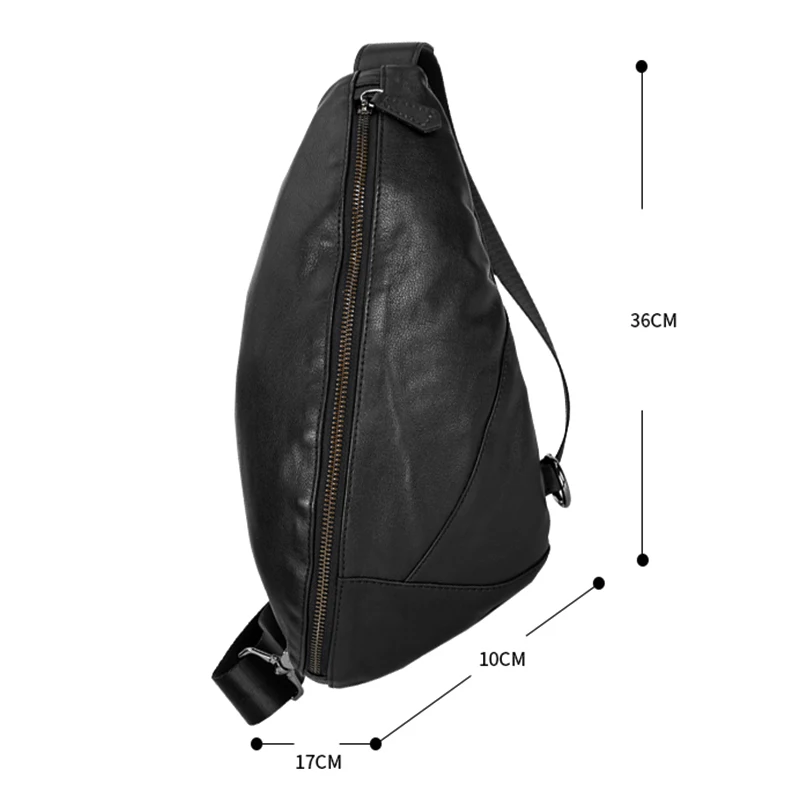
For Daily Urban Commuters
Daily urban commuters need rucksacks that balance professional appearance with practical organization for everyday essentials. Moderate capacity (18-22 liters) typically provides sufficient space without excessive bulk that complicates public transit navigation. Weather-resistant closures become crucial for protecting electronics during unexpected showers.
Organization should prioritize dedicated protection for laptops (typically 13-16 inches) and tablets, with easily accessible pockets for transit cards, keys, and small electronics. A quick-access pocket for smartphones proves particularly valuable during commuting.
Full-grain or top-grain leather offers the durability needed for daily use, with slightly structured designs maintaining a professional silhouette throughout the day. Padded shoulder straps with breathable backing enhance comfort during rush-hour walks, while a top handle provides grab-and-go convenience for shorter carries.
Flap-over designs with magnetic closures underneath decorative buckles offer an excellent balance of security and accessibility for commuting scenarios. Roll-top designs also perform well, particularly for bicycle commuters needing expandability for occasional grocery stops.
For Frequent Travelers
Frequent travelers require rucksacks that maximize functionality while meeting various transportation requirements. The leather travel backpacks category addresses these specific needs with thoughtful features. Optimal capacity ranges from 25-35 liters—enough for several days’ essentials while remaining compatible with carry-on restrictions.
Security features become paramount, including hidden compartments for valuables, lockable zippers on main compartments, and RFID-protected pockets for passports and credit cards. External compression straps help stabilize varying loads and squeeze the bag into overhead compartments.
Organization should support efficient packing with separate compartments for clean/dirty clothing, shoes, and toiletries. Quick-access pockets for travel documents prevent fumbling at security checkpoints, while padded electronics protection shields valuable devices during transit.
Premium full-grain leather offers the durability needed for frequent handling, preferably with reinforced bases that resist abrasion when set down on various surfaces. Convertible designs that transform between backpack and briefcase/shoulder bag provide valuable versatility for different segments of the journey.
Travel-focused roll-tops and flap-over designs with expandable capacities serve travelers particularly well, adapting to souvenir accumulation during the journey. Water-resistant properties provide peace of mind when caught in unexpected weather away from shelter.
For Professional Environments
Professional environments demand rucksacks that convey competence while organizing business essentials. Sleek, structured designs in dark or neutral colors project professionalism, with minimal external hardware maintaining a clean silhouette. Capacity typically ranges from 15-20 liters—sufficient for daily needs without appearing oversized.
Organization should prioritize document protection with padded laptop compartments, document sleeves, and secure storage for smaller business accessories. Dedicated pen slots, business card pockets, and cable management prevent fumbling during meetings.
Leather quality directly impacts professional perception—premium full-grain or top-grain leather in sophisticated finishes signals attention to detail. Hardware should remain minimal but high-quality, with quiet operation that won’t disrupt professional settings.
Flap-over designs with clean lines and minimal external pockets present particularly well in business contexts, as do minimalist top-zip designs that maintain a structured appearance throughout the day. Convertible options that transform into briefcases offer valuable versatility for varied professional situations.
For Weekend/Casual Use
Weekend and casual scenarios favor rucksacks that blend relaxed style with practical features for diverse activities. Medium capacity (20-28 liters) typically accommodates day trip essentials or overnight necessities without becoming cumbersome.
Organization can be simpler than business-focused designs, with open main compartments accommodating bulkier items and fewer structured dividers allowing flexibility. External attachment points for water bottles, light jackets, or accessories prove particularly useful for outdoor adventures.
Leather choices might embrace more character and texture—pull-up leathers that develop unique patina or slightly rustic finishes complement casual styling. Comfort features become essential for extended wear, including well-padded straps and breathable back panels.
Drawstring designs with protective flaps excel in casual contexts, offering easy access and relaxed appearance. Roll-tops provide valuable expandability for unpredictable weekend needs, from impromptu picnic supplies to small souvenir purchases.
Carry On Leather Backpack, Roll Top Leather Backpack
Price range: $77.76 through $96.48 Select options This product has multiple variants. The options may be chosen on the product page17 Inch Leather Laptop Backpack, Men's Leather Travel Backpack, Men's Leather Work Backpack
Price range: $106.28 through $143.88 Select options This product has multiple variants. The options may be chosen on the product pageBlack Leather Backpack, Small Leather Backpack, Women's Leather Backpack
Price range: $112.96 through $116.12 Select options This product has multiple variants. The options may be chosen on the product page- Price range: $80.72 through $108.04 Select options This product has multiple variants. The options may be chosen on the product page
Luxury Leather Backpack, Small Leather Backpack, Women's Leather Backpack
Price range: $137.48 through $138.28 Select options This product has multiple variants. The options may be chosen on the product pageConvertible Leather Backpack, Women's Leather Backpack
$105.12 Select options This product has multiple variants. The options may be chosen on the product page
Design Comparison Table: At-a-Glance Reference
| Design Style | Ideal Use Cases | Typical Capacity | Closure Type | Weather Resistance | Security | Access Convenience | Organization | Weight | Price Range |
|---|---|---|---|---|---|---|---|---|---|
| Flap-Over | Everyday, Professional | 15-25L | Buckles/Straps | ★★★★☆ | ★★★★☆ | ★★★☆☆ | ★★★★☆ | ★★★☆☆ | $$$-$$$$ |
| Roll-Top | Urban Commute, Cycling | 18-30L | Roll with Buckles | ★★★★★ | ★★★☆☆ | ★★☆☆☆ | ★★★☆☆ | ★★☆☆☆ | $$-$$$$ |
| Drawstring | Casual, Light Carry | 15-22L | Drawstring/Cinch | ★★☆☆☆ | ★★☆☆☆ | ★★★★★ | ★★☆☆☆ | ★★☆☆☆ | $$-$$$ |
| Convertible | Business Travel | 15-25L | Varies | ★★★☆☆ | ★★★★☆ | ★★★☆☆ | ★★★★★ | ★★★★☆ | $$$-$$$$$ |
| Travel | Extended Trips | 28-40L | Multiple | ★★★★☆ | ★★★★★ | ★★☆☆☆ | ★★★★★ | ★★★★★ | $$$$-$$$$$ |
| Minimalist | Daily Essentials | 12-18L | Simple Zip/Flap | ★★★☆☆ | ★★★☆☆ | ★★★★☆ | ★★☆☆☆ | ★★☆☆☆ | $$-$$$$ |
The leather rucksack sizing guide provides more detailed information about selecting appropriate capacities for different needs. Ratings use a five-star scale with ★★★★★ representing excellent performance in each category.
Caring for Different Leather Rucksack Designs
Different leather rucksack designs require tailored maintenance approaches to preserve both functionality and appearance. Flap-over designs benefit from occasional conditioning of the flap’s exterior, which typically receives the most weather exposure and UV damage. Hardware connections on flaps should be checked regularly as these stress points experience repeated movement.
Roll-top designs require particular attention to the rolled edge, which undergoes consistent flexing. Regular conditioning prevents cracking along the fold lines, while closure hardware benefits from occasional lubrication to maintain smooth operation. The rolling edge should be stored unrolled when not in use to prevent permanent creasing.
Drawstring designs need focus on the leather around the cinch points, which experiences concentrated friction. The cords or straps themselves should be checked for fraying or wear, with special attention to areas that pass through guides or grommets.
General preventive care practices include:
– Storing structured designs with light stuffing to maintain shape
– Using rain protection during heavy downpours, particularly for suede or nubuck
– Allowing wet leather to dry naturally away from direct heat sources
– Regular conditioning with appropriate leather products (varying by leather type)
– Avoiding prolonged direct sunlight which can fade and dry leather
Hardware maintenance proves equally important—occasional lubrication of moving parts with appropriate products prevents seizing, while gentle cleaning of surface tarnish maintains appearance without removing the desirable patina that develops over time.
FAQ: Common Questions About Leather Rucksack Designs
Which rucksack design is most water-resistant?
Roll-top designs typically offer superior water resistance when properly closed, as the folded top creates multiple layers of protection against moisture ingress. The absence of external zippers or gaps eliminates common entry points for water. However, the leather itself should still receive appropriate conditioning and occasional waterproofing treatment for maximum protection.
Are roll-top designs more spacious than flap-overs?
Roll-top designs generally offer greater flexibility in capacity rather than necessarily larger absolute volume. They excel at expanding when needed and compressing when carrying less. Flap-over designs typically maintain more consistent capacity but may accommodate occasional oversized items by leaving the flap slightly elevated.
How do I know if a minimalist design will have enough organization?
Evaluate your daily carry items and categorize them by access frequency and protection needs. Minimalist designs often accommodate surprisingly efficient organization through thoughtful placement of a few essential dividers rather than numerous small pockets. Consider whether you prefer fixed places for everything or adapt to simpler organization systems.
Which designs typically offer the best laptop protection?
Structured flap-over and dedicated professional designs generally offer superior laptop protection through padded sleeves suspended above the bag bottom. Look for designs with padded dividers that isolate the laptop from other contents and provide edge protection. The most protective designs incorporate reinforced panels on both sides of the computer compartment.
Do convertible designs compromise on comfort as backpacks?
Quality convertible designs maintain comfortable backpack functionality by incorporating properly padded straps that store elegantly when not in use. However, some compromise is inevitable—dedicated backpacks typically offer superior weight distribution for extended carrying. The best convertible options minimize this difference through thoughtful ergonomics and strap placement.
What’s the most secure closure system for travel?
Multiple security layers provide the best protection during travel. Look for designs combining inner zippers (ideally lockable with travel padlocks) with outer flaps or roll-tops that conceal access points. Some premium travel designs incorporate hidden compartments accessible only when the bag is removed, providing secure storage for valuables like passports and emergency cash.
The ultimate guide buying leather rucksack covers these questions and more in greater detail for those seeking additional information.
Investment Value: Balancing Design, Quality and Price
The investment value of a leather rucksack depends largely on the alignment between design complexity, material quality, and construction excellence. More intricate designs with numerous pockets, compartments, and features naturally command higher prices due to increased material requirements and labor-intensive construction. However, complexity doesn’t always equate to better functionality—sometimes simpler designs execute core functions more effectively.
Leather quality creates the most significant price variation between seemingly similar rucksacks. Full-grain leather from premium tanneries costs substantially more than corrected grain or split leather, but delivers dramatically better longevity and aging characteristics. This quality difference directly impacts cost-per-use calculations—a $300 rucksack that lasts 10+ years represents better value than a $100 option requiring replacement every 1-2 years.
Certain design elements justify premium pricing through tangible benefits:
– Hand-stitched stress points that outlast machine stitching
– Edge finishing that prevents moisture ingress into leather layers
– Modular organization systems that adapt to changing needs
– Thoughtfully engineered weight distribution for carrying comfort
The modular leather backpack designs represent particularly good long-term value despite higher initial cost, as they adapt to changing needs rather than requiring replacement when circumstances change.
Timeless designs typically offer better investment value than trend-focused options, maintaining relevance and resale value for years. The hallmarks of enduring design include clean lines, balanced proportions, and restrained detailing that won’t appear dated as trends evolve.
Summit Carry focuses on creating leather rucksacks that balance timeless design with exceptional materials and construction, ensuring each bag represents genuine value despite premium pricing. The investment in quality materials and thoughtful design creates bags that improve with age rather than deteriorating—the true measure of leather goods value.

